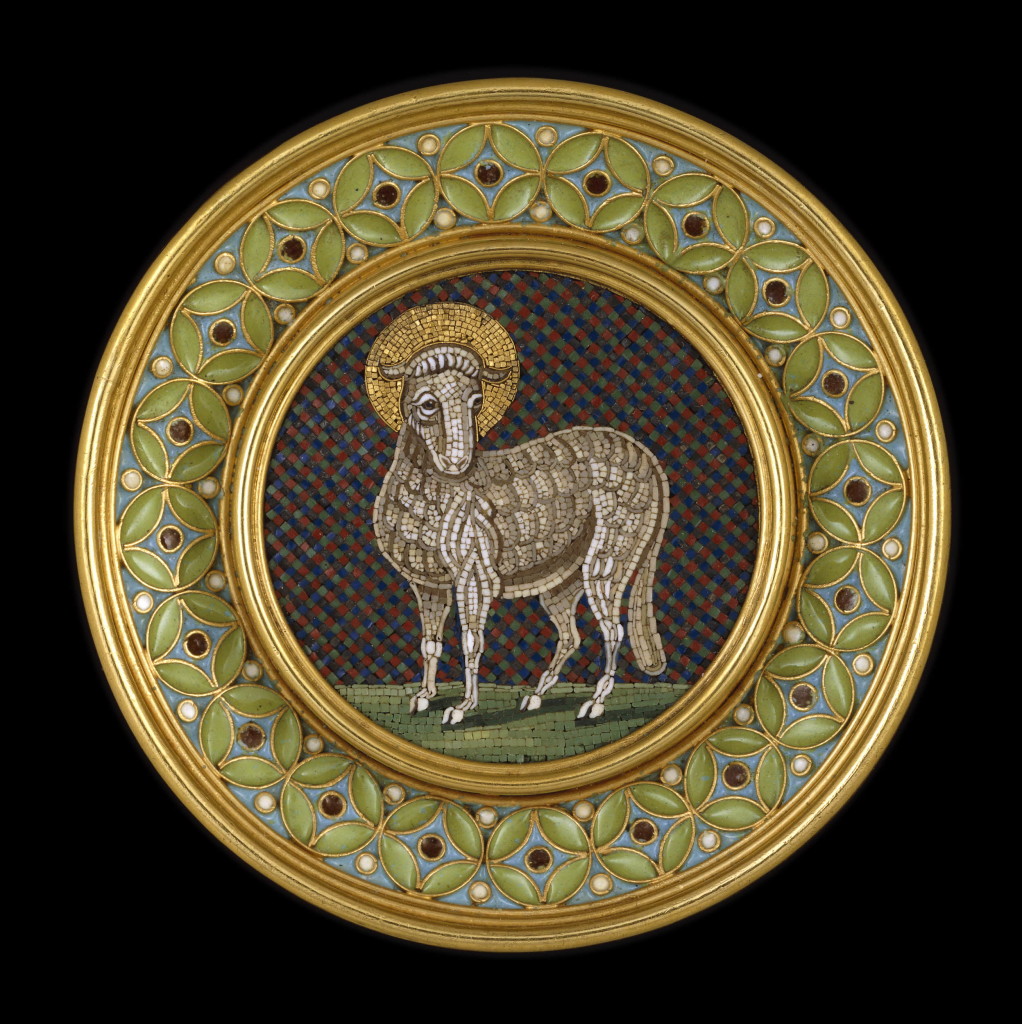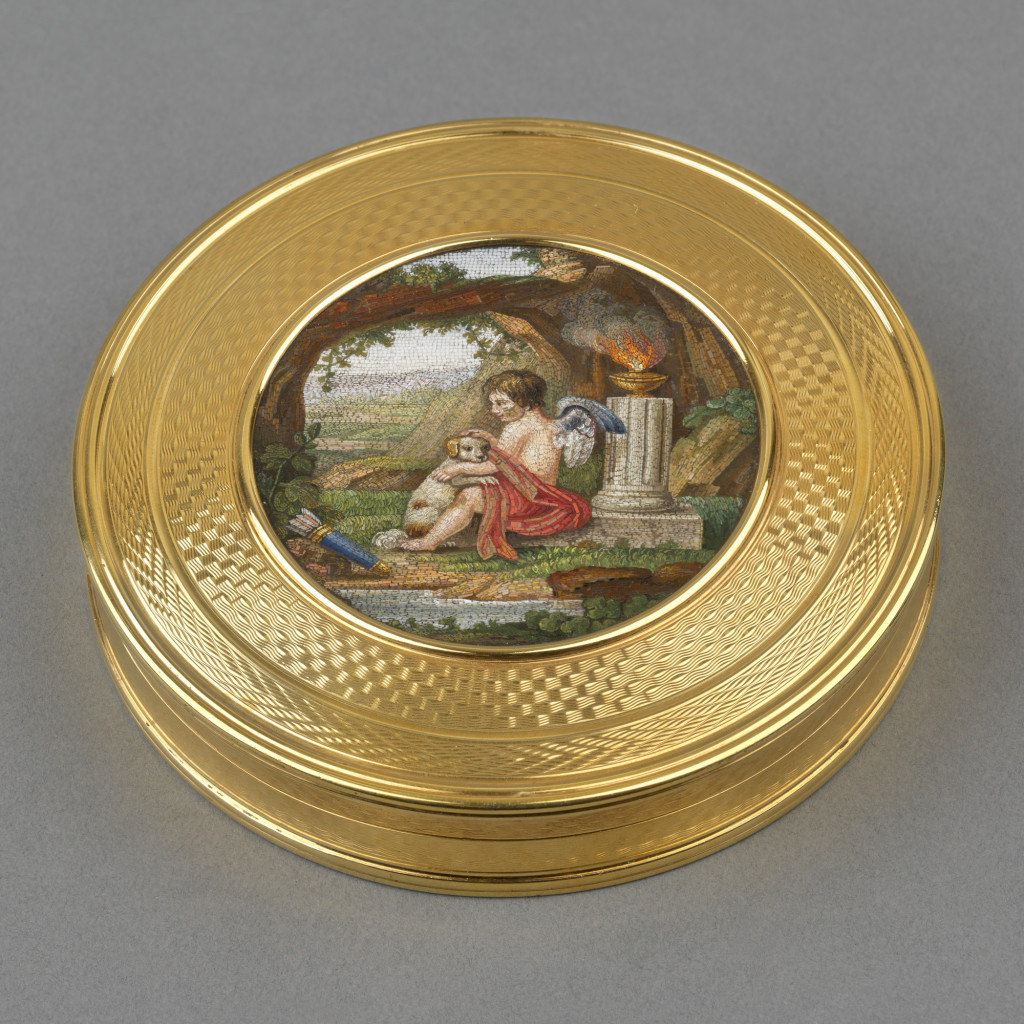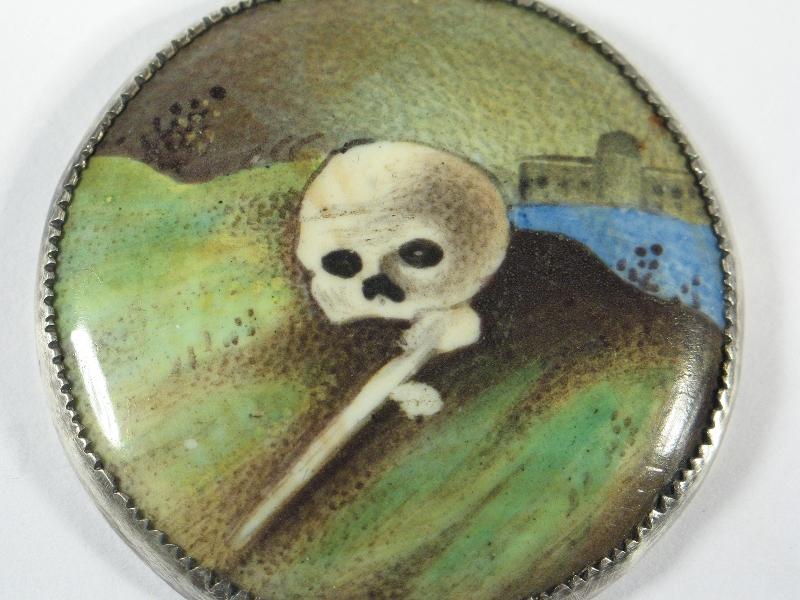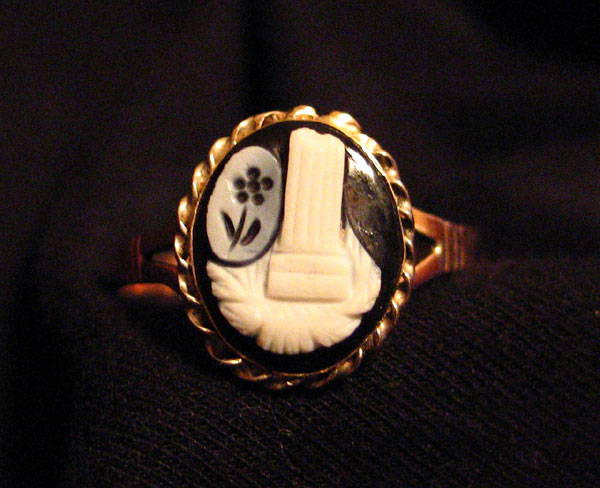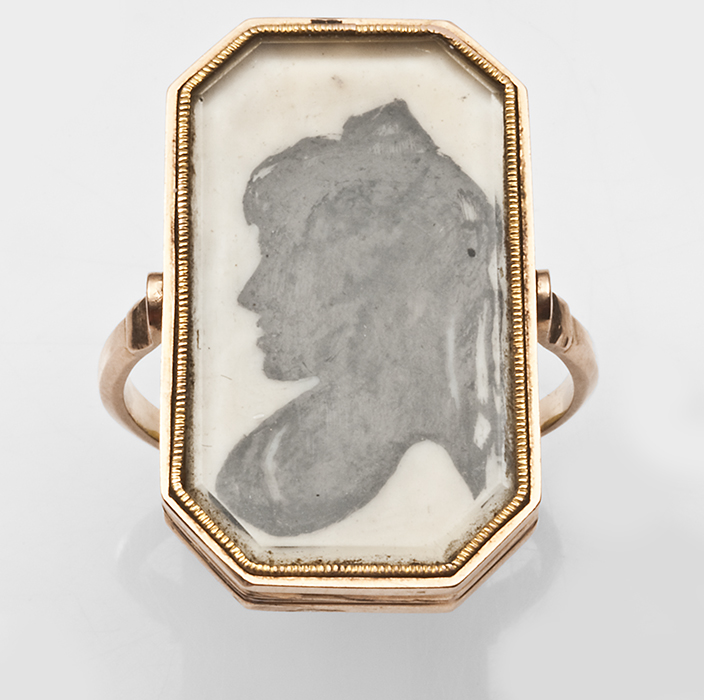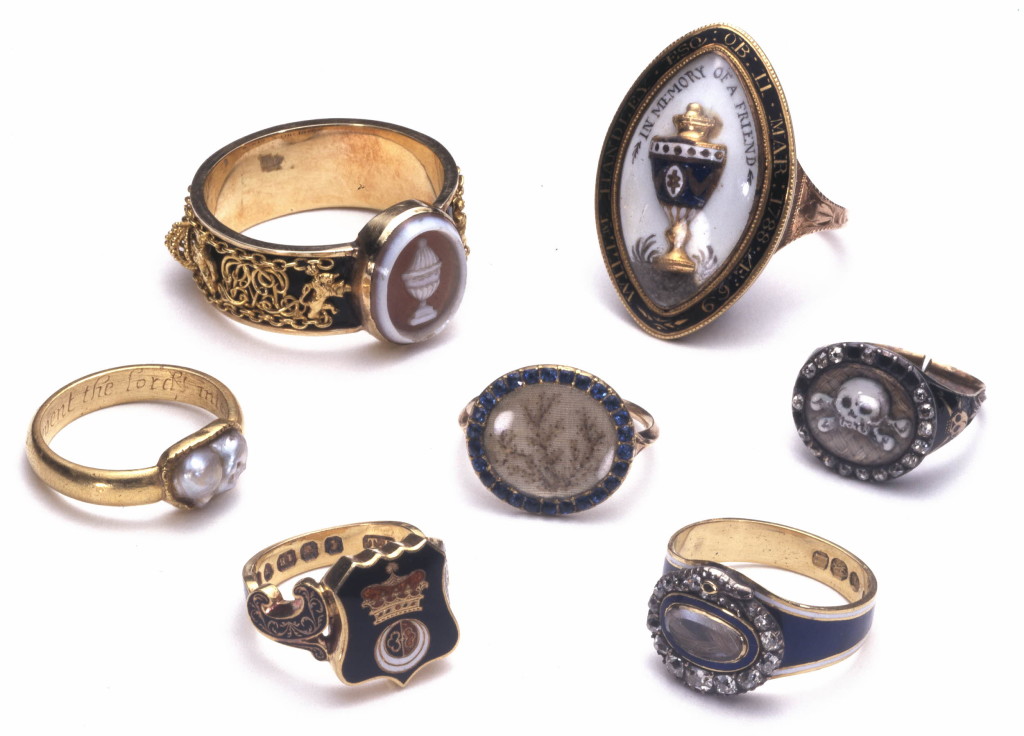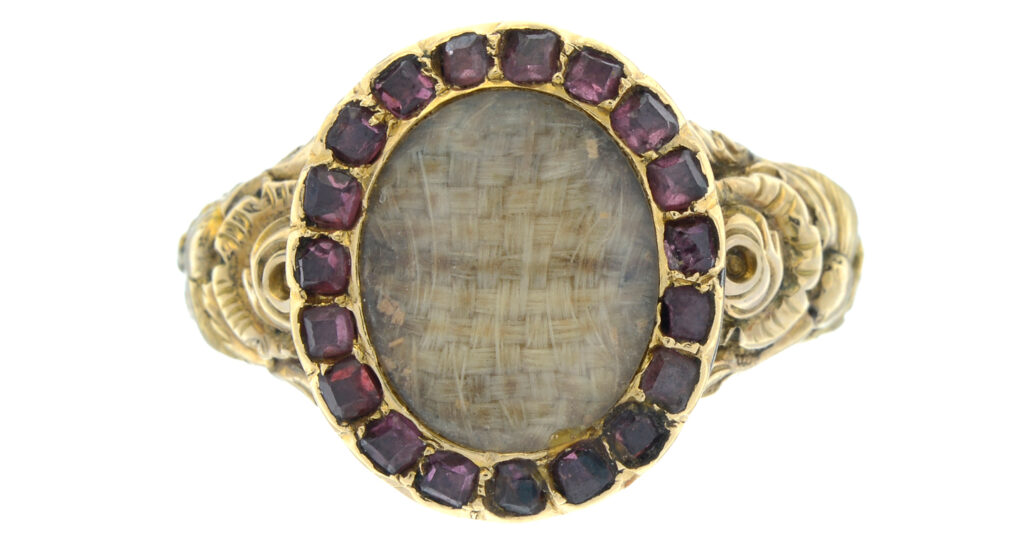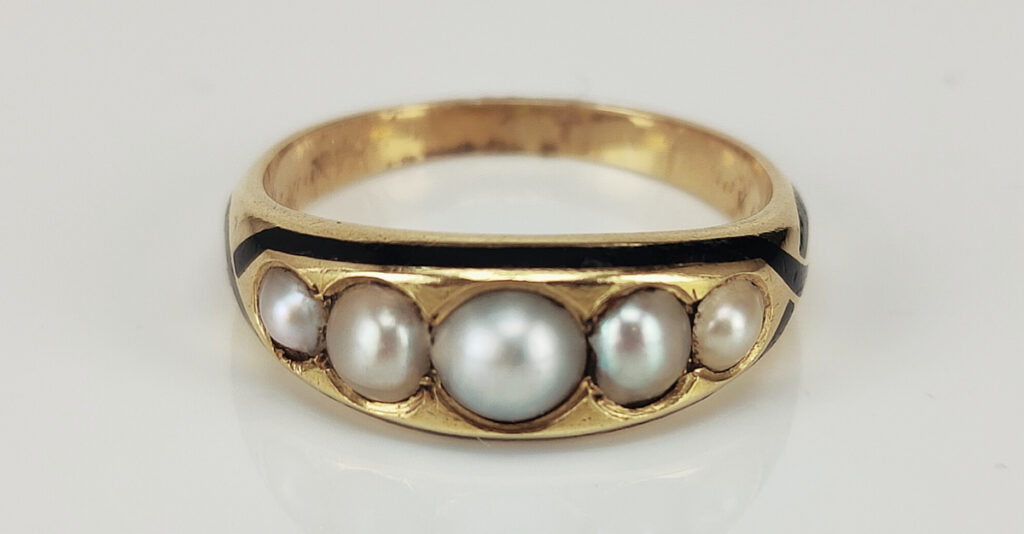Cameo & Micromosaic Influences in Mourning Jewels
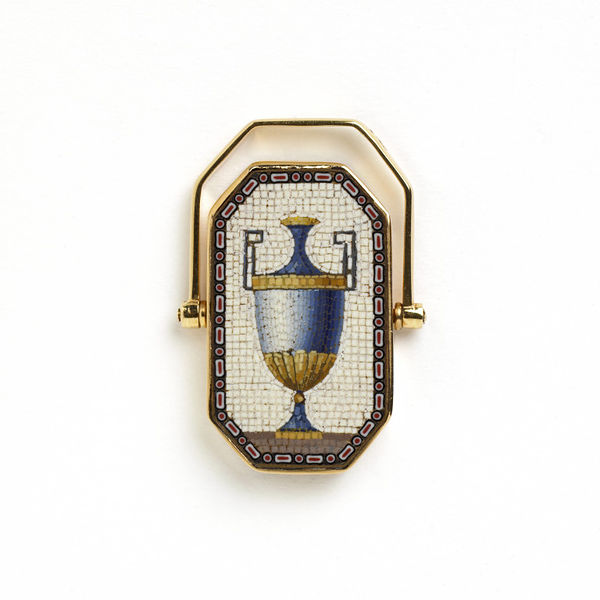
Culturally, the values of Europe differ across small geographic regions. Values in religion, politics, and language all have an impact on the styles of mourning, and how they could be displayed. Mourning, as a custom, requires a specific element of identity to be understood as a reference indicating when a person is in mourning. Through this necessity, mourning symbolism in fashion changed greatly over the c.1600-1900 period, constantly adapting style and symbol to match what was popular.
Revival styles had a major impact on society, referencing the longevity and cultural successes of humanity, with many looking back to establish a social connection to history. Linking these connections in jewellery are the micromosaic and the cameo. Although hailing from ancient origins, the construction and use of micromosaics and cameos never fell from fashion, as they were adapted over time. Their importance brought them to more jewels in their ability to display a scenario and present an immediate connection to the classical world. Cameos and micromosaics are valued in mourning to present death and remembrance as a classical concept of human emotion.
Micromosaics (Vermiculatum, or Opus Vermiculatum in their larger scale) are created through the process of using miniature pieces (tesserae) of glass. The various colours are created through vitreous enamel. It is placed under fire and fused with powdered glass to melt and harden on the surface, creating deep and radiant colours that could be assembled to create the image desired by the artist. Vermiculatum originated in Greece, but was not exclusive to it, having been notably used in Egypt, c.200BCE. Romans popularised the style, with mosaic art becoming an iconic way of representing classical art in the Neoclassical period of c.1760-1820. Glass micromosaic design and techniques developed in the 18th century, in the Vatican Mosaic Workshop in Rome, where they still undertake restoration work today. Micromosaics take the classical intent of the larger pieces and refine them down into only a few centimetres, but retain the quality of the broken tile style to recreate the image in a jewel.
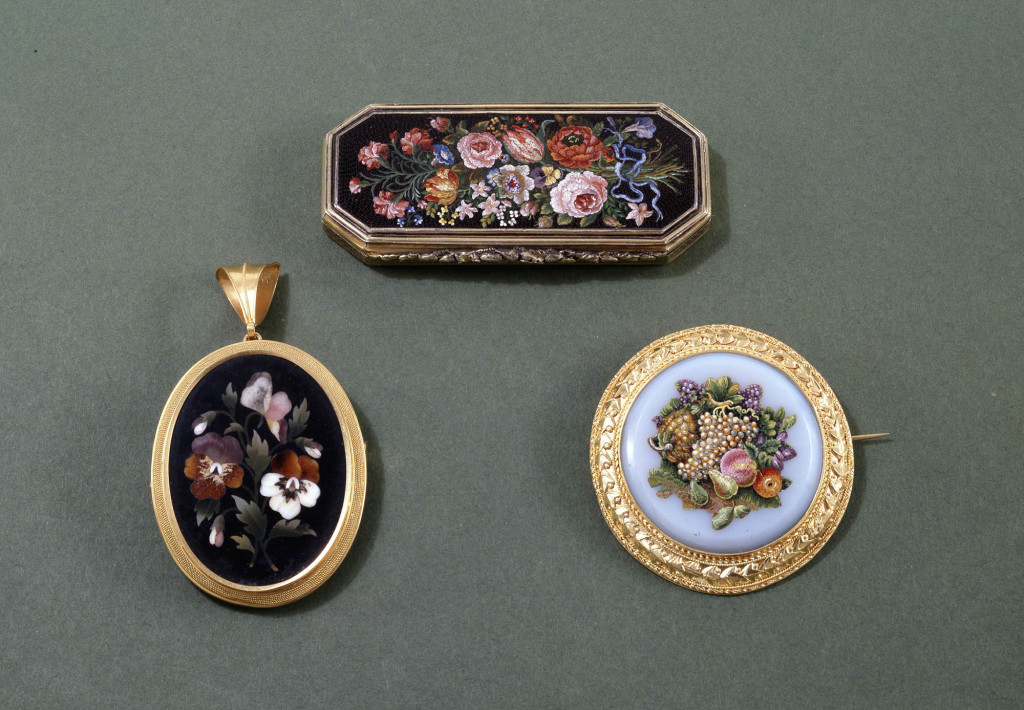
Etruscan, Greek and Roman jewellery became the classical styles to replicate, creating an industry from the 18th century that still operates today. The fascination with the classical world and the ability of an artist to create a scenario within a jewel offers the wearer a display for their cultural identification. Wearing a jewel of fashion that could allow for someone to prove their humanist and intellectual leanings only amplifies their message. For a time when the fascination of the ancient world was being exploited through public display and discovery, ancient techniques such as the mosaic and cameo creation gained a new following.
Jeweller Pio Fortunato Castellani (1794-1865) established many of the ancient revival techniques that were popularised following archaeological discoveries in Herculaneum and Pompeii. These discoveries provided societies with genuine artefacts of societies locked in time, with enough evidence to reproduce and emulate their styles. Classical styles followed these discoveries, seen in the Roman and Greek styles popular in the late 18th century. By the 1830s, Etruscan tomb excavation outside of Rome led to the Etruscan style becoming an individual and popular revival style during the 19th century. Castellani’s sons, Alessandro (1823-83) and Augusto (1829-1914), carried on their father’s work and helped popularise the jewellery through to the 20th century. Their work was based on actual jewellery from the family collection, much of which was later sold to the British Museum.
While miniature glass mosaics had been made in Rome since the 1770s, the Castellani firm popularised archaeology in jewellery, with the influence of Byzantine and Early Christian church designs. This micromosaic Roman funerary urn ring is an early example of the micromosaic style, c.1800. Its two-dimensional design of the urn and fixed position of the background indicate that it doesn’t show the depth and level of advancement of the styles pioneered by Antonio Aguatti (? – 1846), whose glass cutting improvements led to more exact shapes of tesserae and could hold shades of colour on one rod. Having a greater depth of colour led to more vivid depictions of scenarios.
The two-dimensional representation of the urn and the regular positioning of the background tesserae suggest that this is an early micromosaic, about 1800. The long octagonal bezel is typical of rings of this date. Contemporary mourning rings can be found with similar urns made of gold or painted on ivory.
Miniature glass mosaics have been made in Rome since the 1770s, but the Castellani firm were the first to combine ‘archaeological’ jewels with mosaics from the Early Christian and Byzantine churches of Rome: the design of the Lamb is based on the large-scale mosaic in the apse of the Church of Saints Cosmas and Damian in Rome.
Mourning and the micromosaic style aren’t two of the most obvious styles to connect; one with its bright, lush elements and mourning with its very monochromatic colours. Sepia styles of the late 18th century are more typical, utilising brown and red hues to paint the urn, willow, weeping female and other Neoclassical mourning symbols. As travelling to Italy was a status symbol as much as a pleasurable event, commissioning a piece of art in English style to be taken back and shown in fashionable circles leads to different interpretation of common symbols.
Cameos
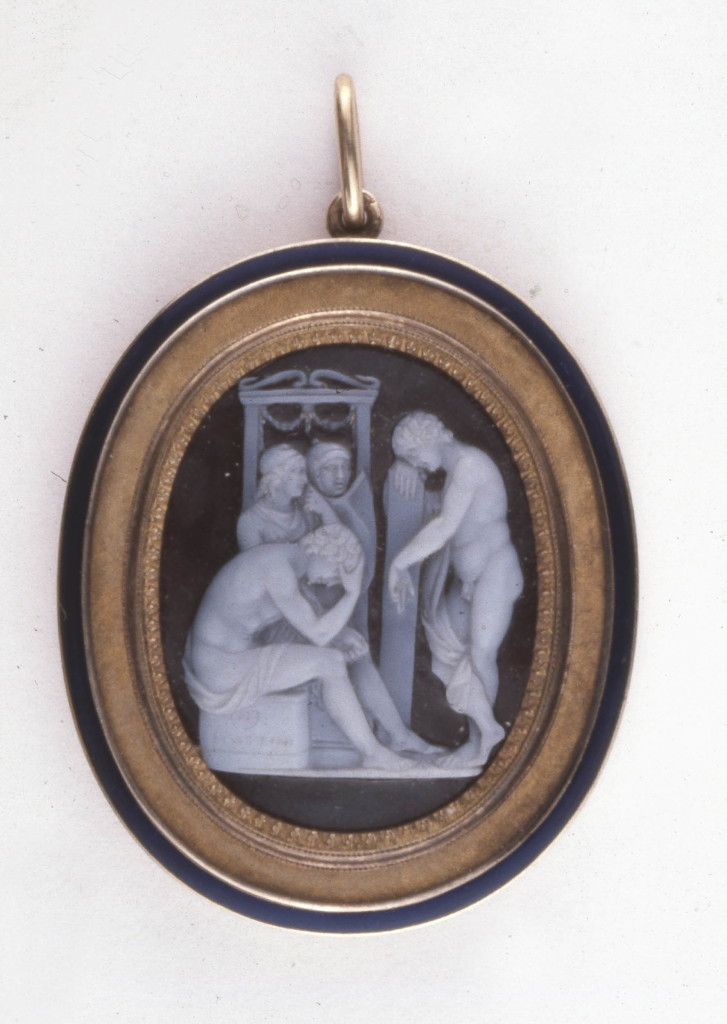
Cameos have been passed down through generations and set in more modern jewels as a way of remaining contemporary. Their connection to history is popular enough that they are individually collected, regardless of the setting and either sold or given as tokens of love themselves. Because of the long span of time in their production, various fashions in clothes and hairstyles, scenarios of classical settings and statements of love in their carving are very bespoke to certain places and times. The above cameo by Niccolo Amastini, Achilles Mourning for Patroclus, is interesting in that others were carved and lost to time:
“The signature has been tentatively identified as that of Niccolo Amastini, the son of the Roman gem-engraver, Angelo Amastini… This cameo has been in the Hermitage since 1813, which supports the date given for his birth (1780)… He seems to have been working as a gem-engraver by 1806, as G.A. Guattani, in his ‘Memorie enciclopediche romane’, (1806) speaks of the ‘Young Mastini’ as being the son of the engraver, Angelo. It seems most improbable that there should be two families of gem-engravers with such similar names, and in the absence of any evidence to the contrary it is tempting to state that ‘Mastini’ was definitely used as a shortening of the name ‘Amastini’.”
Having other artists working in very specific regions on materials specific to those regions make the individuality of the cameo quite important in collecting. The vast subject matter and the flux of time that a cameo was worn can make the use for mourning purposes more difficult to ascertain.
Cameo design in mourning jewellery of the c.1760-1820 period fits in perfectly with Neoclassicism and its fashionable context. Mourning, for its primary means of being for memory, adapts to the popular style of any particular time, for as long as there is memory and love, there is a token to trigger these. Roman cameo production in shell or glass was inherited from Greek production, with examples existing from the 3rd century BCE. Cameo popularity in jewellery existed within the courts of Augustus and remained that way through to around the 3rd century CE.
This example, from Miller’s Cameos Old and New, depicts an earlobe being pinched, with the inscription ‘MNHMONEYE MOY’ – ‘Remember Me’. This example is 3rd Century Roman and at its most fundamental level is a cameo of and only qualifies as a ring due to its elegant 18th Century setting. Cameos being repurposed in jewellery was popular during the 18th and 19th centuries, with many mourning depictions being re-set into other jewels. While considered Georgian in the origins of the Neoclassical era and its revival of classical culture, Victoria continued to the popularity of cameos, with her love for sentimental jewels. This revival carried through the 19th century, blending with other revival styles for jewellery settings.
Archaeological excavation was also another important element to the growth of classical culture in the 18th century. Pompeii and Herculaneum had discoveries in 1711, but resumed with major excavations in 1738, igniting the passion and interest in artists, thinkers and antiquarians. The ‘Grand Tour’, a social institution since c.1660, was an upper-class, male rite of passage which the tourist would be taken by a tutor, servant and a coach, through the Alps, Seine to Paris or Rhine to Basel. Switzerland would be next, with a trip through to northern Italy and down to Naples, then through to Germany and back across to England. Each of these places was held in educational regard. Elements from history or cultural education (fencing, mountaineering, history, riding) were all absorbed from the relevant societies. Tokens from the Grand Tour were common to return to England with, such as the pendant below, which shows the elements of mortality:
With the archaeological excavations, one can imagine the surprise and delight of discovering the classical heritage which could be taken back to their homelands and recreated for modernity. Herculaneum was described by Sir Horace Walpole as ‘a whole Roman town, with all its edifices, remaining under ground’, meaning that a pristine site of research was offered to modern craftspeople to replicate or be inspired by. Architecture is one of the most persuasive and organic styles of design that permeates culture. Architecture is grand and dominating, not allowing anyone to pass by it without noting its style. When architects such as Robert Adam used the past for aesthetic taste, classical influence in Scotland and England could not be stopped. In 1748, Giovanni Battista Piranesi began etching classical structures and in 1755, Adam on his Grand Tour met Piranesi met, allowing Adam to return with further inspiration in classical style.
Mourning cameos never fell out of popularity, but their use was not as common as other mourning styles. Sardonyx, with its black base and white strata, made for the most typical of mourning cameos. Used across most forms of jewellery, from brooches to bracelets, they retained the classical revival styles, while most other styles followed on from the popular Gothic Revival period post c.1820. These jewels kept alive the classicism of the mourning symbolism, as can be seen in the above ring from c.1870. The broken column, representing a life cut short, is balanced with the forget-me-not, which is a far more 19th century symbol to be placed with. Its essence remains in a style that is still recognisable today.
Shape and Form, c.1800
For rings of the c.1800 period, the setting is important to note. There was much more exploration of setting styles during this period, with the rectangular swivel of the urn ring matching this contemporary piece:
Designs were larger and more adaptable to Neoclassical fashions, having rings that could take over an entire joint of the finger. Displaying hair, a silhouette or painted ivory with an allegorical scenario was easier than the previous navette shape, with the taller north-to-south, pointed style.
This style did not last, however, with the larger styles retracting and the smaller oval and rectangular shape becoming popular for housing hair mementos.
In the above collection of mourning rings, the typical style of the c.1800 period can be seen, from the navette style, second from the top, to the smaller oval shapes that would succeed the larger styles in the bottom right. Having a basic understanding of these styles makes it easier to identify a particular time when a ring was made, allowing for more investigation as to what the symbols mean or what the materials are that the person who commissioned the jewel was trying to articulate.
Pieces of Memory
Cameo and micromosaic styles are relevant for multiple reasons. The ability for a person to connect themselves with history, the presentation of a beautiful scenario and even the statement that someone from the north of Europe had travelled south and received a cultural token. When used in the context of mourning, they have helped to keep the classical elements of mourning housed in jewellery, and remain relevant for future generations to appreciate.




